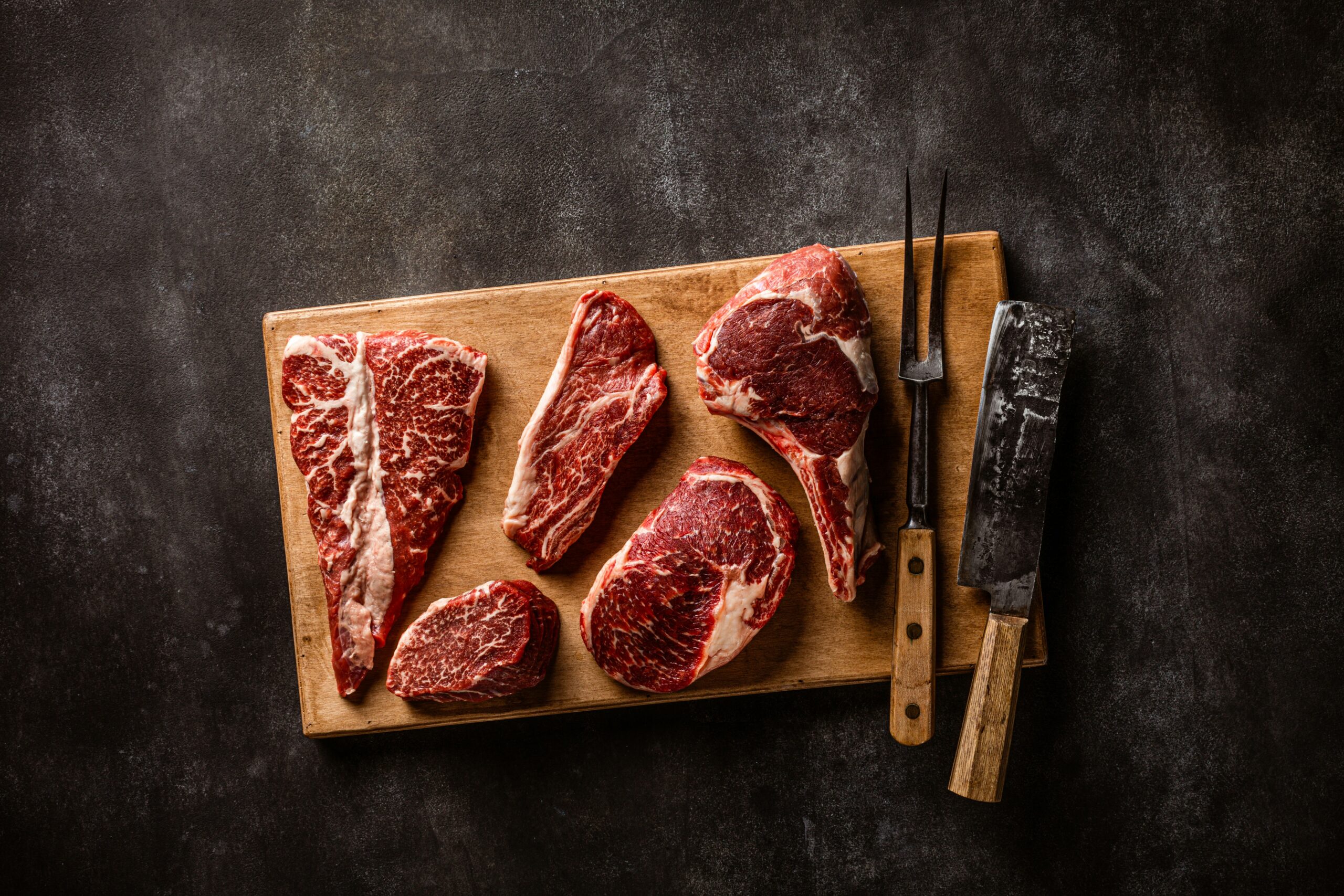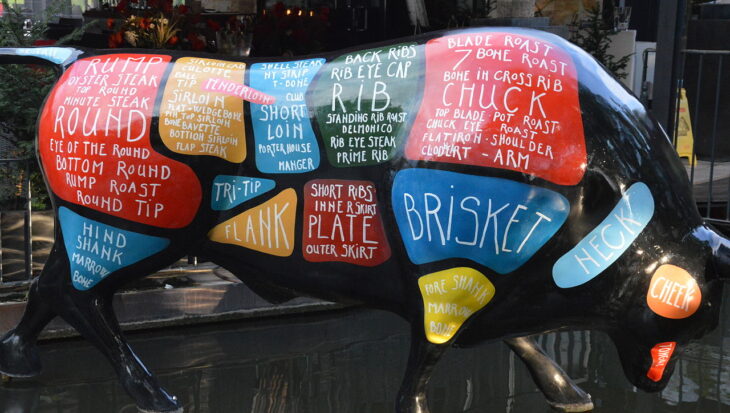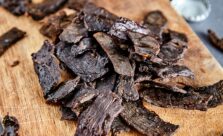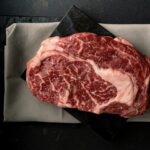When you’re following a keto or carnivore diet, the type of beef you eat matters. Sure, ribeye is popular, but there’s a whole world of cuts out there that are often overlooked. In this guide, we’ll explore the most flavorful, nutrient-rich beef cuts, from well-known choices to hidden gems, that will fuel your diet without breaking the bank.
Why Beef Cuts Matter: Flavor, Nutrients, and Affordability
The beauty of beef is in its variety. Different cuts offer unique textures, flavors, and nutritional profiles. Some are lean and mild, while others are richly marbled and melt-in-your-mouth tender. For keto and carnivore diets, fatty cuts are often preferred due to their higher caloric and nutrient density. However, if you’re open to exploring a range of cuts, you’ll find affordable and nutrient-packed options that can add variety and flavor to your meals.
Chuck vs. Ribeye: The Battle of the Budget-Friendly and Luxurious
Chuck is often the go-to for those who want ribeye-like flavor without the high price. Coming from the shoulder area, chuck is full of connective tissue that, when cooked slowly, turns tender and flavorful. It’s perfect for stews, slow roasts, and even as ground beef for juicy burgers.
Ribeye, on the other hand, is prized for its rich marbling and tenderness, coming from the rib section. It’s best for grilling or pan-searing due to its fat content, which caramelizes beautifully over high heat. If you’re a ribeye fan, try chuck for dishes that require longer cooking – the flavors are incredibly similar and just as satisfying.
UK Beef Cuts: Sirloin vs. Rump
In the UK, sirloin and rump are common cuts but differ in texture and fat content:
- Sirloin has a generous fat strip along the side, making it a juicy, flavorful option for grilling.
- Rump, on the leaner side, requires careful cooking but delivers a robust flavor when seared or grilled quickly. It’s a great choice for those who prefer a leaner steak but can also benefit from adding a touch of animal fat or cooking it with butter.
Minced Beef: The Keto Staple
Minced beef, typically made from various parts of the cow (often chuck), is one of the most versatile and affordable protein options. For keto enthusiasts, look for options with 20% fat content. Not only does it align with keto’s high-fat requirements, but it’s also often cheaper than leaner ground beef options. Minced beef can be used in everything from meatballs to casseroles and is great for anyone looking to keep costs down without sacrificing nutrients.
A Look at Nutrient-Rich Offals (Organ Meats)
Organ meats are some of the most nutrient-dense foods you can eat. Here’s a quick breakdown of common options:
- Liver: High in vitamin A, B12, iron, and folate. But be cautious – due to its high vitamin A content, liver should be eaten in moderation.
- Kidney: Contains B vitamins, selenium, and iron. It’s also a rich source of protein and can add a unique flavor to dishes.
- Heart: Known for its CoQ10 and iron, beef heart is a great choice for energy and metabolic support.
- Tongue: Surprisingly fatty and versatile, tongue is easy to cook and has a mild flavor.
Including these cuts in your diet brings a range of benefits, but organ meats should be balanced with muscle meats for optimal nutrition.
Beyond the Basics: Lesser-Known Beef Cuts for the Adventurous Eater
If you’re ready to go beyond the classic ribeye or sirloin, here’s a rundown of lesser-known beef cuts that can add variety to your meals:
- Blade Roast / Top Blade: Comes from the shoulder and has plenty of marbling, making it tender when slow-cooked.
- Flat Iron Steak: Incredibly tender and best suited for quick, high-heat cooking.
- Pot Roast / Chuck Roast: A slow-cooking staple with rich flavor, ideal for stews and braised dishes.
- Skirt Steak (Inner and Outer): Known for its intense flavor and best cooked quickly over high heat.
- Flank Steak: Lean but flavorful. Marinate and sear for the best results.
- Tri-Tip: A West Coast favorite, moderately fatty and flavorful, best for grilling.
- Porterhouse: A showstopper cut that combines a strip steak and tenderloin. Perfect for grilling.
- Round Cuts (Top Round, Bottom Round, Eye of Round): Lean and affordable, best for roasts or thinly sliced for sandwiches.
- Oyster Steak: A small, tender cut located near the rump, often overlooked but perfect for quick searing.
These cuts offer a variety of flavors, textures, and fat contents, allowing you to enjoy a well-rounded, keto-friendly diet that doesn’t rely solely on ribeye.
The Nutritional Edge of Beef: Vitamins and Minerals
Beef is loaded with essential nutrients, many of which aren’t as bioavailable in plant-based foods. Here are a few key ones:
- Vitamin C: Found in small amounts, especially in fresh beef and organ meats.
- B Vitamins: Particularly rich in B12, essential for neurological health.
- Iron and Zinc: Beef is one of the best sources of these minerals, which are critical for immune function and energy.
For more on the health benefits of beef, explore our article on the 10 Surprising Health Benefits of Going Full Carnivore.
Fats vs. Oils: Why Animal Fats Are Better for Cooking
Animal fats like tallow, lard, and butter are far superior to seed oils (like canola or soybean oil) for a carnivore or keto diet. Seed oils are extracted using high heat and chemicals, which can make them prone to oxidation and inflammation. Animal fats, on the other hand, are stable under high heat, minimally processed, and rich in nutrients that support brain and cellular health.
If you’re interested in learning more about animal fats, check out our detailed post on Essential Animal Fats for Keto and Carnivore Diets.
Best Cooking Methods for Each Cut
To make the most of your beef cuts, it’s essential to use the right cooking methods:
- Grilling: Perfect for ribeye, sirloin, NY strip, and skirt steak. The high heat preserves the juicy fat.
- Slow-Cooking: Ideal for tougher cuts like chuck, blade roast, and shank.
- Pan-Searing: Great for quick-cooking cuts like flat iron, skirt, and flank steak.
Beef Recipes to Try
Here are a few recipe ideas to get you started:
- Beef and Bone Broth Stew: Combine chuck or short rib with marrow bones for a rich, hearty stew.
- Pan-Seared Skirt Steak with Herb Butter: Sear the steak quickly, and finish with a dollop of herbed butter.
- Stuffed Beef Heart: A unique way to enjoy organ meat, stuffed with herbs and slow-cooked.
Wrapping Up: Beef Cuts for Every Budget and Every Taste
Choosing the right beef cuts can help you save money, explore new flavors, and maximize the nutrients in your diet. By mixing up your choices and trying different cuts, you’ll find what works best for your lifestyle. Take the time to experiment, and don’t be afraid to step outside your comfort zone.
For a full list of local farms and butchers offering high-quality beef cuts, check out our MooMap directory for options in your area. Here’s to making the most of every meal and every cut!








